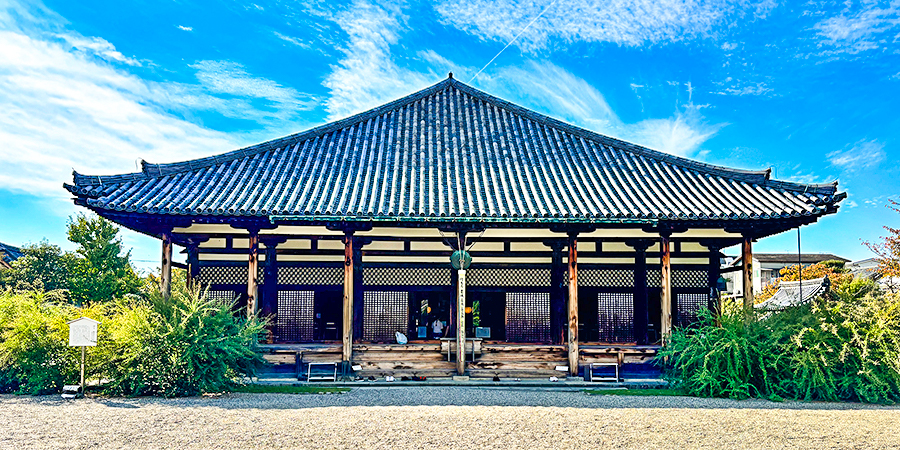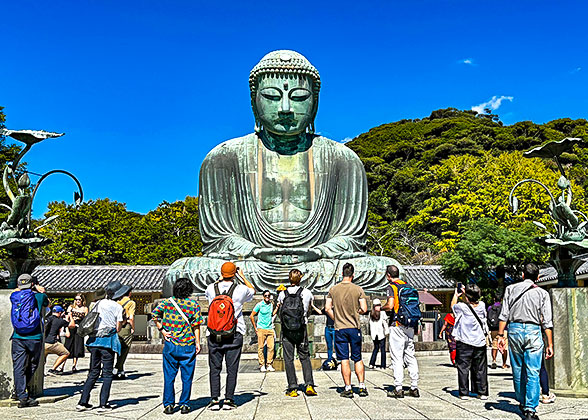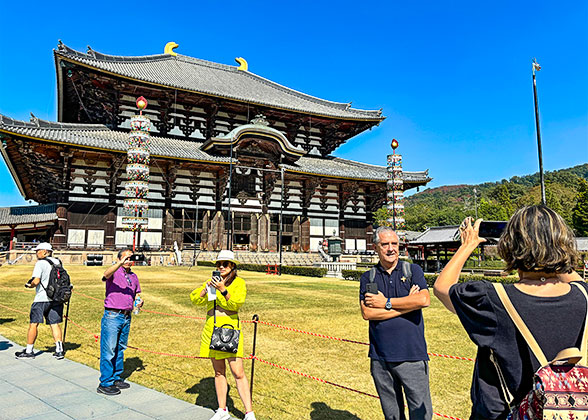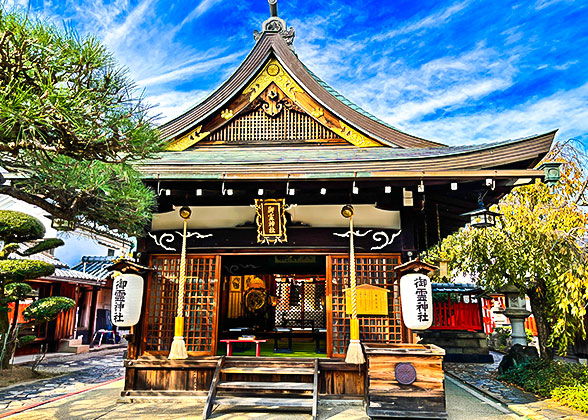Gangoji Temple
Gangoji Temple is one of the oldest temples in Nara and a UNESCO World Heritage Site. Its history can be dated back to the year 588. The current remained buildings were mainly built in the Nara Period (710-794), among which Gangoji Gokuraku-bo is the main building. The temple preserves varied Japanese national treasures and important cultural property, including a five-storied miniature pagoda, the wooden standing statue of Prince Shotoku, and the wooden sculpture of the Buddha Amida Nyorai.1,300 Years’ History of Gangoji Temple
Gangoji Temple is one of the seven most important temples in Nara, the “Southern Capital of Japan”. It was originally built in 588 by the noble politician Soga no Umako and moved to its present site in 718 with the relocation of the capital of Japan. Gangoji Temple was called Hoko-ji or Asuka-dera in the past. The temple once occupied the whole Nara-machi during the Nara Period (710-794), but now only several buildings are reserved because of the destruction by war and natural disasters.The Main Buildings in Gangoji Temple
1. Gangoji Gokuraku-bo
Gangoji Gokuraku-bo, also known as Mandala Hall, is the main building of the temple and the national treasure of Japan. When you enter the temple, the first building you will see is this hall. During the Nara Period, the hall was the Zen room of famous Buddhist monks Chiko and Raiko. Inside the hall, you can appreciate the important cultural property of Japan, the “Chiko Mandala Itae Panel”, a painting that was painted on the plank.

Gangoji Gokuraku-bo of Gangoji Temple
|
2. Horinkan Hall
The hall is located to the south of the Gangoji Gokuraku-bo, and it displays some national treasures and important cultural property of Japan, like a mini five-storey pagoda, the sitting statue of Prince Sengde, and some Buddha statues. The five-storey pagoda is the only five-storey pagoda that has been preserved since the heyday of the Nara era.3. The East Gate

The East Gate of Gangoji Temple
|
Top Things to Do in the Temple
1. Identify the Tiles on the Roof
You can find that there are four colors of tiles on the roofs of Gangoji Gokuraku-bo: red, black, white, and gray. It is said the tiles in red and black are from the Asuka period (592-710), and the white tiles and gray tiles are from the Nara period (710-794).2. Watch the Countless Small Stone Works
There are many stoneworks in the temple. Some stone works are flat stone slabs that stand on the ground, and there is a picture of the Buddha carved in the stone. Some slabs are low as the lower leg of an adult. Some stone works are mini five-storey stone pagodas, and these stone pagodas are neatly arranged.3. Appreciate Varied Flowers
There are nearly 300 cherry trees in the temple, and one of the trees is said to be planted by the Prince of Sengde (574-622) during the Asuka period (592-710) and is listed as the national treasure of Japan. You can appreciate the beautiful cherry blossoms among the stoneworks in the spring. In addition, you can appreciate the purple platycodon grandiflorum, red lycoris radiate, and white silverflower in fall. By the way, the rhizome of lycoris radiate is toxic, and you cannot swallow it. If you only smell and touch it, you can rest assured.

Blooming Sakura in Gangoji Temple
|
Top Events in the Gangoji Temple
1. Jizoe Manto Kuyo
On the evening of August 23 and 24, the temple will hold a ceremony to honor the Buddhist monk, Jizoe, who is said to be protector of children. In these evenings, you can see more than 10,000 candles are lit around the temple. Besides, children can play in front of the game booth, taste delicious snacks, and appreciate musical performances.2. Autumn Special Exhibition
The exhibition will be held between late October and early November and it will show some research results about Gangoji Temple. In addition, the important cultural property xylograph, Chiko Mandala Itae panel, will be on special display.

Gangoji Temple in Autumn
|
Tips:
1. If you want to enter the halls of the temple, you need to take off your shoes, so it is necessary to take a pair of socks.2. You are not allowed to eat food in the temple.
3. You are not allowed to take pictures when get into these halls.
Opening Time and Ticket
The temple is open from 9:00 am to 5:00 pm all year round. The ticket is 500 yen, but it is charged 600 yen during autumn special exhibition.Approximate Visit Time
About 0.5 hour. If you like a quiet temple, Gangoji Temple is a good choice.How to Get to Gangoji Temple
1. Take Kintetsu Nara Line, get off at Kintetsu Nara Station, then you can walk for about 13 minutes to Gangoji Temple. In addition, you can take the bus at Kintetsunaraeki Bus Stop, then get off at Fukuchiincho Bus Stop; it takes about 11 minutes from the Kintetsunaraeki Bus Stop to the temple.2. Take the JR Nara Line, and get off at JR Nara Station. Next, take the Nara bus at the nearby JR Naraeki Bus Stop and get off at Tanakamachi Bus Stop; it takes about 15 minutes from the JR Naraeki Bus Stop to the temple.
Nearby Attractions to Visit
After visiting the representative temple of Nara-machi, you can walk to visit a beautiful shrine next to the Gangoji temple named Groyo Shrine. Then, you can walk to Naramachi Koshinoie to see this traditional Japanese residential house. Besides, you can walk to the Higashimuki Shopping Street to taste the local authentic food and buy some deer souvenirs.
See More:





